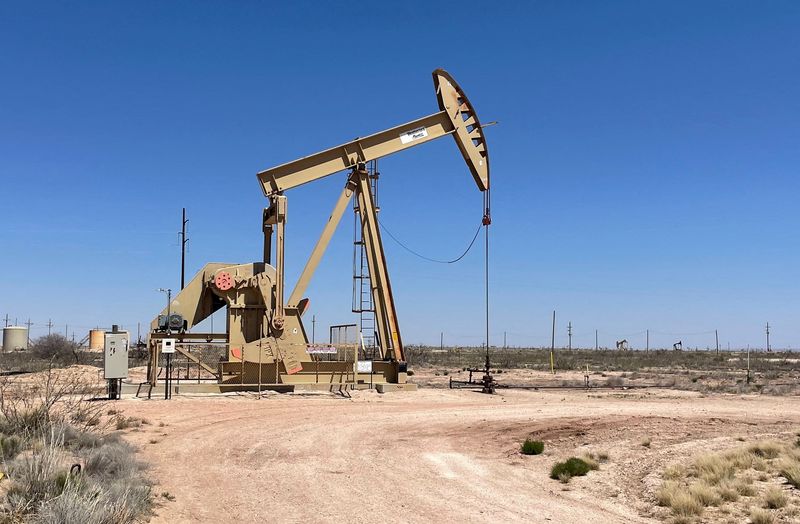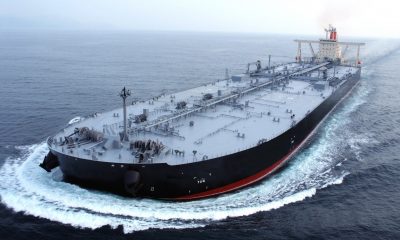Commodities
Oil output inches up at top US shale firms, with faster growth elusive


© Reuters. FILE PHOTO: Chevron fracking site near Midland, Texas, U.S. August 22, 2019. REUTERS/Jessica Lutz/File Photo
By Arathy Somasekhar
HOUSTON (Reuters) – Top U.S. shale oil producers are raising output by pulling more from each well but lack the level of activity to add significant new volumes, a Reuters analysis of investor forecasts showed.
The companies that a decade ago upended global oil and gas markets and turned the U.S. into an oil-export powerhouse in recent years have been less of a factor because of a shift to maintain, but not significantly expand, their production.
Favoring earnings over higher production has helped U.S. companies deliver strong profits with modest volume increases. The OPEC producer group’s cuts have helped keep prices above $70 a barrel for most of the year.
U.S. producers expect to inch production higher for the rest of the year, according to second-quarter forecasts, by squeezing more oil and gas from each well. The gains will add 850,000 barrels per day (bpd) to production, according to U.S. estimates.
Executives at top shale producers say they have fine-tuned their production techniques to push volumes 2% higher in the next six months with little effort.
“We’ve got a very efficient machine running … we will see growth, we anticipate, even at maintaining flat activity levels,” said Dominic Macklon, an executive at the third-largest Permian shale producer ConocoPhillips (NYSE:).
Since January, ConocoPhillips has upped its full-year production outlook by about 30,000 bpd to up to 1.81 million bpd. Hess Corp (NYSE:), which drills in the Bakken shale in North Dakota, has raised its 2023 Bakken output target by 10,000 bpd, or about 6%.
Pioneer Natural Resources (NYSE:), the second-largest shale producer, also raised its estimate of full-year output by about 3% despite cutting one drilling rig and paring its budget.
LONGER WELLS, LOWER COSTS
Pioneer’s average well productivity is running about 12% higher than 2022 levels, it said, crediting longer wells and lower costs for fracking.
Top Permian shale producer Chevron (NYSE:) expects its production in the Texas/New Mexico basin to jump 10% this year on better well placement and applying more frac sand to ooze oil out faster from each well.
Most analysts remain skeptical shale gains can outrun the well decline rates over the long term without a sharp boost in drilling activity. Shale output typically declines by 50% in the first three years, and active U.S. drilling rigs are down to 659, the lowest since March 2022.
“We expect pretty moderate growth due to operator discipline and constraints on the oilfield service side,” said Chetan Sharma, a senior associate with energy technology firm Enverus.
Significant growth will require a reversal of rig count declines and a stronger response to upticks in oil prices, Sharma added. U.S. oil futures traded this week above $82 a barrel, helped by OPEC’s cuts, after starting the year at about $80 a barrel.
Smaller shale producers this year have pushed up their production in the hopes of attracting suitors, but that may have reached its limit with a surge in mergers and acquisitions last quarter, Enverus said.
Commodities
Oil prices rise; U.S. crude inventories plunge, Russia-Ukraine truce eyed
Commodities
India’s Reliance to stop buying Venezuelan oil over US tariffs, sources say
Commodities
Oil prices climb on Venezuela supply worries

 Forex3 years ago
Forex3 years agoForex Today: the dollar is gaining strength amid gloomy sentiment at the start of the Fed’s week

 Forex3 years ago
Forex3 years agoUnbiased review of Pocket Option broker

 Forex3 years ago
Forex3 years agoDollar to pound sterling exchange rate today: Pound plummeted to its lowest since 1985

 Forex3 years ago
Forex3 years agoHow is the Australian dollar doing today?

 Cryptocurrency3 years ago
Cryptocurrency3 years agoWhat happened in the crypto market – current events today

 World3 years ago
World3 years agoWhy are modern video games an art form?

 Commodities3 years ago
Commodities3 years agoCopper continues to fall in price on expectations of lower demand in China

 Economy3 years ago
Economy3 years agoCrude oil tankers double in price due to EU anti-Russian sanctions

























